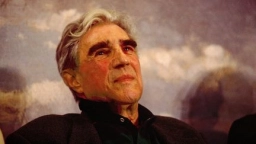Documentary articles

Exposition : Albert Ier, un prince préhistorien, au Musée d’Anthropologie préhistorique de Monaco
Le Musée d’anthropologie préhistorique consacre actuellement la totalité de ses espaces d’exposition ouverts au public à la célébration de l’œuvre du Prince Albert Ier, qui en est le fondateur, en 1902.

Hommage national à Jean Malaurie
L'ethnologue et éditeur Jean Malaurie, défenseur des Inuits, décédé à l'âge de 101 ans, a reçu mardi un hommage national alors d'une cérémonie aux Invalides à Paris où les honneurs militaires lui ont été rendus.

Hommage à Jean Malaurie
Le Comité Albert Ier s’associe à l’hommage rendu à Jean Malaurie. Le centième anniversaire de Jean Malaurie (1922-2024) coïncidait avec la célébration du centenaire de la disparition du prince Albert Ier de Monaco (1848-1922).

Invitation au voyage
L'épisode de l'émission d'Arte Invitation au voyage, "Nancy Huston dans l'Alberta-Monaco-Cherbourg" diffusé pour la première fois en 2022 au moment des commémorations du centenaire Albert Ier est rediffusé sur Arte et disponible en replay : https://www.arte.tv/fr/videos/104432-099-A/invitation-au-voyage/

Un nouveau document est en ligne.
Comme le bandeau sur la page d'accueil le signale, un nouveau document a été mis en ligne. Il enrichit le contenu de la base de données archivistique. Vous le trouverez dans la rubrique "Parcours de vie/Oeuvres". Il s'agit d'une bibliographie complète, chronologique, des publications du prince. Avec, à chaque fois, un lien, permettant de consulter en ligne le document en question. Par ailleurs, n'hésitez pas à naviguer sur le site, chaque jour de nouveaux documents sont ajoutés.

Albert Ier, "prince des mers"
Stéphane Bern reçoit Thomas Blanchy, adjoint au directeur des Archives et de la Bibliothèque du Palais princier et spécialiste de l’histoire de la principauté.

Hommage au professeur Yves Coppens (1934-2022)
Lors de deux tables rondes, le mardi 12 décembre 2023 à 15 h, en présence de S.A.S. le Prince Albert II et de M. Xing Qu, directeur adjoint de l'UNESCO, des chercheurs ont rendu hommage à l'homme et à l'oeuvre scientifique du professeur Coppens.

Dévoilement d'un tableau inédit de Louis Tinayre

Le site s'enrichit chaque jour de nouvelles notices
La base de données archivistiques, réunissant plusieurs collections est d'une grande richesse. Ainsi, le travail d'implémentation, en cours est une opération de longue durée.

13 July 2023